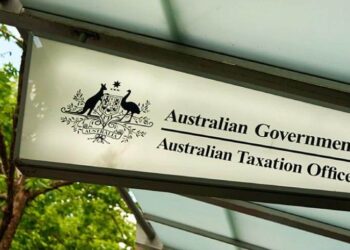ASIC has completed a review of exchange traded products (ETP) markets in Australia, including exchange traded funds (ETFs), aimed at ensuring the market is delivering on promises to investors. It has released the findings in Report 583: Review of exchange traded products and retail.
The review was prompted by the large and growing investment in ETPs in Australia by retail and SMSF investors, it said.
“There is significant retail participation in the Australian ETP market, particularly from SMSFs. SMSF ownership of ETPs quoted on the ASX AQUA market represent more than 60 per cent of the total ownership,” the report said.
While the review found that the market is generally performing well, ASIC said it did identify a range of risks.
“The key concern identified was the potential for the bid/offer spread to temporarily widen, leading to investors paying a spread that would be considered too high, and undermining the relatively low cost proposition of some ETPs,” said the report.
The bid-offer spread, which is the difference between the price at which an investor buys a share and the price at which they can sell it, can become so wide that it materially adds to the cost of investing in an ETP product, ASIC explained.
This can undermine the low cost rationale for SMSFs and other investors in relation to some ETPs, it said.
“Investors may not be able to identify that the spread level is high, especially without relevant comparisons for the spreads of similar products,” the report said.
Market operators and issuers should play a more proactive role in monitoring the performance of ETPs, the report said, including liquidity in the market, and where they observe spreads widening unreasonably, they should take appropriate action.
“ASIC is also recommending that ETP issuers publish the indicative net asset value (iNAV) with a frequency that enables investors and financial advisers to make [a] more informed decision,” the report said.
The review found that most issuers have implemented systems and processes for the accurate advertising of financial products.
However, ASIC said the review did find examples of issuers disseminating or publishing misleading material on their websites aimed at retail investors or advisers.
“This misleading material included statements that the fixed income securities underlying the ETPs were investment grade and involved secured assets, where this was not universally the case,” the report said.
“[There were also] statements comparing the ETP to an asset class with different and lower risk characteristics, without making it clear that the risk attributes were different.”
The report also stated that ASIC is concerned about ETFs with very low funds under management remaining quoted on exchange, despite poor liquidity and fees eroding returns.
“This could lead to very poor investor outcomes, and undermine investors’ confidence in the ETP market over the long term,” the report said.
Most issuers reported that they take great care in deciding to launch a new ETP, including by conducting considerable market research and testing so that they have not been in a position where they have had to contemplate the removal of a fund from quotation, the report noted.
“However, issuers did recognise that there may be situations where the assets underlying an ETP are insufficient to manage the ETP efficiently and achieve the requisite investment objective,” the report said.
The report said ASIC will continue to monitor the development of the Australian ETP market and assess the outcomes for investors in this market.
“Specifically, we propose to engage with novel issuers or issuers offering novel products, review a selection of PDSs and advertising material and monitor reports of misconduct,” it said.
SMSF investors were early adopters of ETFs in Australia, and have long been heralded as fuelling the growth of the domestic ETF market.



Hear hear well said but don’t expect any leadership from any political party. The Liberals have abandoned their core and we have to get over it. Hopefully they will be decimated at the next election and will have to undergo a Renaissance.,
Why not look at the buy/sell spreads of managed funds and the ridiculous MERs they are charging? This has been a big issue in the managed fund’s industry for decades!
Are you kidding me? ASIC take upon themselves to waste time frivolously coming up with ‘potential long term’ minor losses at the buy sell level, and yet ineptly completely ignore the ISA investment skewed allocations and opaqueness issues that have been identified as enormous risks to a greater number of the Australian population.
Seriously, anyone with clout or ability please bring this to the RC; direct from [b]APRA’s June 2018 report, SMSF’s[/b] that are largely self-directed and trustees acknowledge the risks that they undertake, come in at only [b]1,124,000 member accounts[/b]. Compare this to [b]11,272,000 member accounts[/b] that the[b] ISA [/b]represent where they have little choice but take investments dished to them by the ISA. And there have been far larger factual identified actual costs coming out of the ISA member funds, as opposed to a ‘potential spread dislocation’.
If this were a medical team reducing risk of an epidemic, which population would they inoculate first?
If these were crime statistics, where would the police focus first?
In road statistics, isn’t it the higher death/incident statistics that get looked at first? Unless of course it’s an election year, which makes me wonder about the rationale, focus and motivation behind ASIC’s ‘report’.
Isn’t about time these public servants were actually acting in the greater publics’ good, and do the job they are paid to do, rather than pursuing their own political and power agendas?